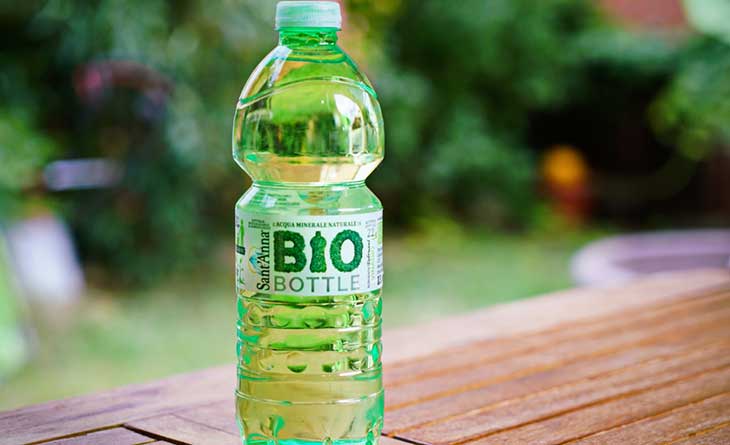
Bioplastic- The positive plastic
Bioplastics are made from renewable biomass sources like corn and sugar cane. Most of the bioplastics are biodegradable, and gets decomposed within six months, and this is one among their finest benefits. Bioplastics are sustainable, reduces carbon footprint, recyclable as well as compostable. Bioplastics can be obtained from natural biopolymers such as polysaccharides – starch and cellulose, proteins- gelatin and soy protein, lipids from plants or animals.
Corn and sugarcane are of the maximum famous feed stocks presently used to create bioplastics, however there are numerous alternatives to pick from. For instance, Turkish inventor Elif Bilgin gained a 2013 Science in Action award for growing a bioplastic from banana peels while she changed into 16 years old. Other renewable sources which have been used consist of mango skins and waste from potato cutting, inclusive of that utilized in growing new packaging for Snickers sweet bars in Europe.
Bioplastics are known to have great durability, flexibility, printing and sustainability. Bioplastics has one plus point; it helps to reduce the emission of greenhouse gases. Bio-based, durable plastics, such as bio-based PE or bio-based PET, has some properties that are similar to their conventional versions such as the normal plastic bottles. However, bioplastics are technically equivalent to their fossil counterparts; yet, they can help to reducing the product’s carbon footprint. Moreover, they can also be mechanically recycled in the according existing recycling streams.
As of 2014, bioplastics approximately has 0.2% of the global polymer market (300 million tons). According to the Bioplastic Market report, “the global bioplastic market size was valued at $5.8 billion in 2020 and is projected to reach $16.8 billion by 2030”. Although bioplastics are not commercially significant, research continues on this topic. However, many industries such as biomedicine, packaging and electrical are in need of bioplastics. Slowly people are shifting to use bioplastics for various applications. Some examples of bioplastics in everyday life are shopping bags, catering service wares, major beverage packing, vegetable trays, food containers, medicinal appliances such as plates and pins. One example of bioplastic that most of us can find in our home are detergent bottles, these are made from bioplastics and are easily degradable.
A good example of bioplastics is bio-PET bottles. Polyethylene terephthalate (PET) is a thermoplastic material used for manufacturing bottles, films and textile fibres. PET belongs to the polyester group. It consists of 70 percent terephthalic acid and 30 percent monoethylene glycol (MEG) by weight and is frequently used in the packaging sector. For bio-PET, MEG is produced from renewable raw materials from plants instead of fossil raw materials.
In contrast biodegradable plastics are made from traditional petrochemicals but they are designed in a way to break down faster. They have additives that helps to speed up their rate of decay or breakdown in the presence of oxygen and light. Biodegradable plastics has some advantages, they are easily decomposable when discarded, they can also be recycled through an organic process, they are non-toxic as well as chemical free. Therefore, the recycled waste can be used to produce biogas, that can be used for different purposes
Benefits:
Both bioplastic and biodegradable plastic have the same benefits, Let’s have a look at the advantages of bioplastics. Generally speaking, the finest benefits of a burgeoning bioplastic enterprise is because of its low carbon footprint and less polluting ability. Most people end up buying bioplastic products, because of its eco-friendly nature. Bioplastics can also be molded, or shaped as per our choice just like the traditional thermoplastics. Bioplastics emit less carbon footprints while compared to conventional petroleum-based plastics. Unlike traditional plastic, it doesn’t affect the environment. It also has greater market value, in a recent study of European bioplastics, it was shown that most people prefer to buy things that are less harmful for the environment, so bioplastics are good to go”. Use of bioplastics helps in minimizing the littering, as it gets easily decomposed within a period of six months. Bioplastics are good for storing food, it is a boom for the packaging and catering service ware.
Disadvantages
Although bioplastics is a good alternative to traditional plastics, it has some drawbacks of its own, such as high cost, less shelf life due to lack of mechanical properties. These cannot be degradable in landfills. People might think that bioplastics are degradable, however not all plastics are degradable. We are not still sure about the sustainability of bioplastics.
Despite the advantages, bioplastic is still a threat to marine life, it cannot be broken down into smaller particles under water, so it is more likely to harm marine life. It is said that bioplastics are ecofriendly but we still aren’t in a position to say how effective it really is.
Whilst using plastics, we need to find proper ways to dispose it. We know that most of the bioplastics are compostable and recyclable, but one needs proper knowledge on how to dispose it. Bioplastics requires a specific disposable procedure, preferably it is industrial composting as it prevents landfills. One can opt for organic recycling or mechanical recycling. Proper recycling methods aids to the use of bioplastics.
As industrial composting facilities exist, bioplastics are the most environmentally friendly choice. These natural-based plastics decompose completely, though most must end up in a high-heat composting facility. The best thing one could do for the environment is to avoid disposable plastics all together. Instead, try to use reusable zero waste products made from renewable and recyclable materials. We all know that bioplastic is much better than traditional plastics, but don’t consider it to be an alternative to traditional plastics. Try to switch onto things that are less harmful for the environment.